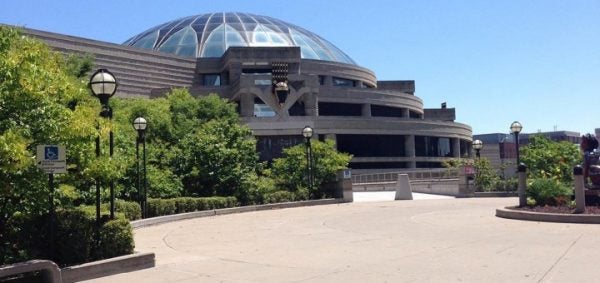Originally written by Marie Stango for the Public Humanities section of the Discover Rackham blog in November 2015
How can scholars located in the academy make their skills and work relevant to the broader community? This question is a big one for many scholars in the humanities, particularly in my field, history. It is also a particularly relevant question for historians in my major fields of interest, African American history and women’s/gender history. Historians and other scholars have been at the forefront of contemporary political issues this summer, in particular – consider the #CharlestonSyllabus compiled by bloggers at the African American Intellectual History blog in response to the nightmare murder of nine black men and women at Emanuel African Methodist Episcopal Church on June 18, or the brief of historians of marriage, which was used to support the case for same-sex marriage at the Supreme Court of the United States. There are many other examples of scholars using their skills and expertise outside of colleges and universities. I am defending my Ph.D. dissertation this spring, and as the defense date has gotten closer, I have often wondered about how to apply my work outside of the academy.
While I intend to pursue a career at a college or university, I cannot envision myself as a scholar who only works inside of the academy. I want to help my students navigate their internships and jobs at local community centers, museums, nonprofits, and government offices. I want to partner with archives and historical societies to create new content and exhibits. And I want to be an advocate for the importance of studying the humanities and humanistic social sciences, all the way from providing evidence for a major Supreme Court decision to encouraging that engineering major to take my class on the Civil War and American Memory. I was fortunate enough to have this experience this summer as a Mellon Public Humanities Fellow at the Charles H. Wright Museum of African American History in Detroit.
The Charles H. Wright Museum is the world’s largest institution dedicated to the study of African American history, and it is located only thirty miles or so down the road from the University of Michigan. The collections are incredible: they range from a replica of a slave ship, to evocative artwork, including an impressive showcase of stained glass, to exhibitions on musicians and performers with Detroit roots. The Wright isn’t “just” a museum, however. It bustles with events to strike every person’s fancy, including children’s summer camps, musical performances, and an African World Festival. At the Wright, I worked with curator Patrina Chatman on a variety of projects, including a content curation project on classical composers and musicians, research on Dan masks produced in Liberia and Côte d’Ivoire following a visit to a local art gallery; and a hands-on tutorial on how to register museum artifacts.

Many of the projects I did at the Wright Museum involved some form of writing that required me to translate some research – on composers or African art – into a readable format that would be useful to a museum researcher or patron. For instance, in writing about composer Samuel Coleridge-Taylor, I included information about his Krio heritage. While I know what “Krio” means because I study African American settlements in West Africa, I could not expect my readers to know what that term meant. Writing in an accessible and clear way is a skill I have developed through my internship experience, and one that will be useful to me in my academic career and in any future collaborations I might have with conversation partners in public history.
One of the most valuable things I learned at the Wright is related to my opening question: How can scholars located in the academy make their skills and work relevant to the broader community? So often, we scholars attempt to tackle this question on our own. Instead, based on my experience at the Wright, I think we should look to what other institutions outside the academy are already doing. Many of them, like the Wright, are already engaged in the type of work we want to do, through their exhibitions, public programming, and community outreach.
The Wright Museum makes visible, tangible, and accessible stories in black history that are not commonly understood or examined by general audiences. The Wright’s mission, to “open minds” and “change lives” through exploring African American history and culture, is achieved not only through the exhibits contained within the museum building’s walls, but also through the activities and events sponsored by the Museum and the multiple communities which engage with the Museum space. It seems to me that the Wright Museum is not only a place in which the public can learn about African American history, but it is also a place in which African American history is being made. It is a model for how accessible community engagement can be achieved while also maintaining rigorous levels of historical accuracy and accountability. It’s a place that a lot of scholars can learn from.
[rpwe limit=”100″ thumb=”true” length=”20″ thumb_height=”100″ thumb_width=”100″ thumb_align=”rpwe-alignleft” cat=”10″ excerpt=”true” readmore=”true” readmore_text=”Read More »”]


